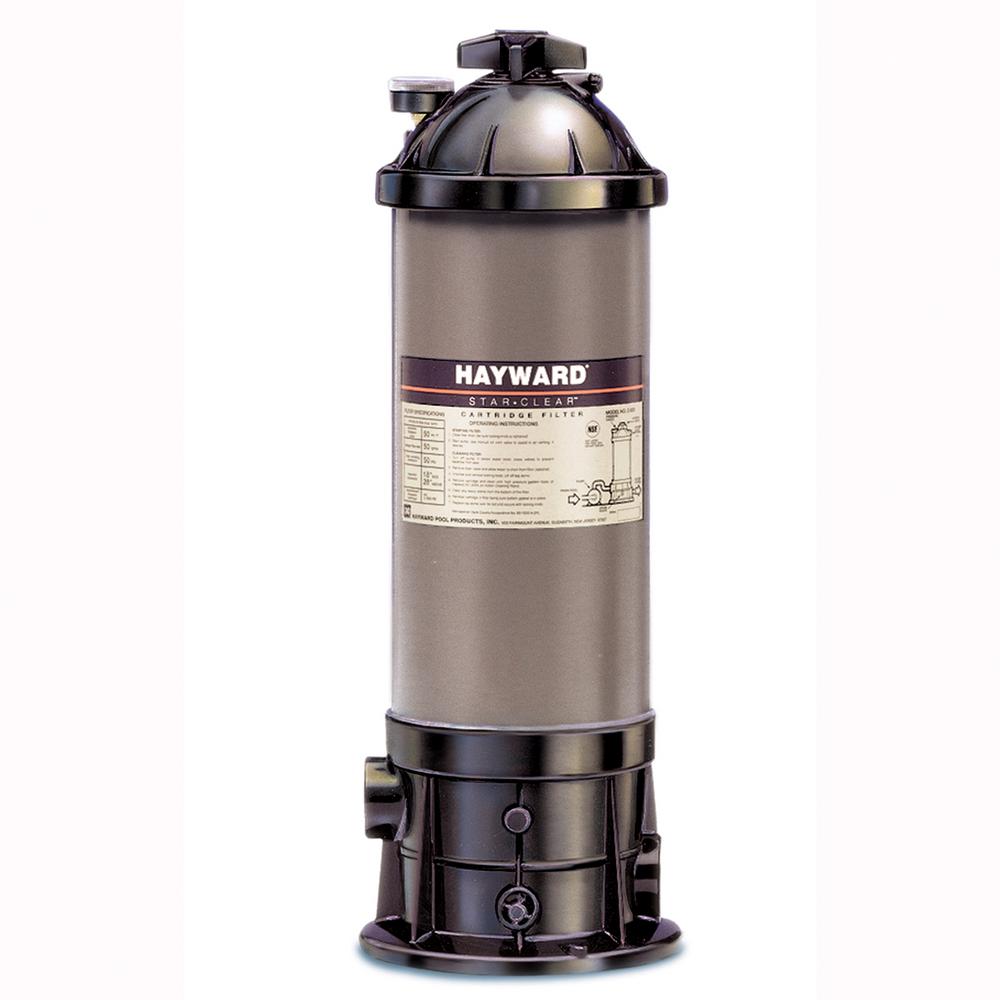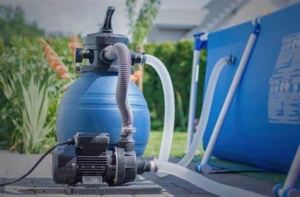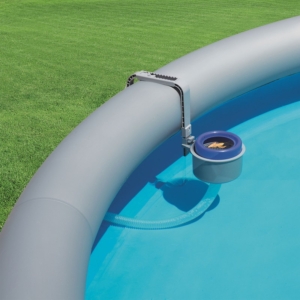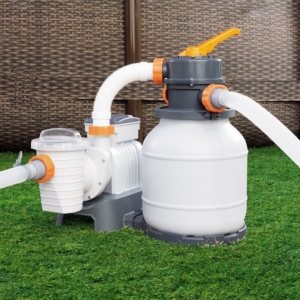How to Use Pool Filters Effectively: Guide
Owning a pool, you want to keep the water clean and inviting. This guide will explore what you need to know about using pool filters effectively. From understanding different types of filters to operating, maintaining, and troubleshooting them, you’ll gain the knowledge needed to ensure crystal-clear water in your pool.
Understanding Pool Filters
When it comes to pool filters, there are generally three types: sand filters, cartridge filters, and diatomaceous earth (DE) filters. Each type has its own set of pros and cons. Here’s an overview:
- Sand Filters: Pros:
- Cost-effective: Sand filters are generally more affordable compared to other types.
- Low maintenance: They require less frequent cleaning and maintenance compared to cartridge and DE filters.
- Long filter cycle: The sand media can last for several years before needing replacement.
Cons:
- Lower filtration capability: Sand filters have larger pores, which means they are not as effective at capturing smaller particles.
- Less efficient: They may require longer filtration cycles to achieve the desired water clarity.
- Backwashing required: Periodic backwashing is necessary to remove trapped debris and maintain filter efficiency.
- Cartridge Filters: Pros:
- Superior filtration: Cartridge filters are known for their excellent filtration capabilities, capturing particles as small as 10 microns.
- Energy-efficient: They require lower pump pressure, resulting in energy savings.
- Easy to clean: Cleaning cartridge filters is relatively simple, usually involving hosing off or soaking the cartridges.
Cons:
- Higher upfront cost: Cartridge filters are generally more expensive to purchase initially.
- More frequent cleaning: Depending on the pool usage and debris load, cartridges may need more frequent cleaning or replacement.
- Reduced flow rate over time: As the cartridges accumulate debris, the flow rate can decrease, requiring occasional replacement.
- Diatomaceous Earth (DE) Filters: Pros:
- Exceptional filtration: DE filters provide the highest level of filtration, capable of capturing particles as small as 2-5 microns.
- Efficient cleaning: Backwashing with DE filters is typically faster and more effective compared to sand filters.
- Extended filter cycle: DE media can last longer before requiring replacement.
Cons:
- Higher maintenance: DE filters require more frequent maintenance, including recharging with DE powder.
- Higher cost: DE filters tend to be more expensive compared to sand and cartridge filters.
- Fine powder handling: Handling and adding DE powder can be messy and require extra care.
Here are the names of the top pool filters:
- Pentair Clean & Clear Plus Cartridge Filter
- Jandy CL Series Cartridge Filter
- Sta-Rite System 3 Modular Media Filter
- Hayward SwimClear Cartridge Filter
- Pentair Quad D.E. Filter
- Hayward ProGrid D.E. Filter
Exploring Different Types of Pool Filters
Each type has its unique features and considerations.
Sand filters are popular due to their affordability and easy maintenance. They use a bed of sand to trap debris and contaminants as water passes through. However, they require backwashing periodically to clean the filter media.
Cartridge filters offer excellent filtration and are relatively low maintenance. They use a pleated cartridge to capture particles, and cleaning involves rinsing or replacing the cartridge periodically.
Diatomaceous earth (DE) filters provide the finest level of filtration. They use a porous powder called diatomaceous earth to capture even microscopic impurities. DE filters require periodic backwashing and the addition of fresh DE powder.
Preparing the Pool Filter System
Here’s a general guide on how to prepare the pool filter system:
- Gather necessary equipment: Collect all the equipment and tools you’ll need, including any replacement parts or cleaning solutions specific to your filter type.
- Turn off the pool equipment: Before working on the filter system, make sure to turn off the pool pump, heater, and any other related equipment. This step is crucial for safety.
- Release pressure: If your filter system has a pressure relief valve, open it to release any built-up pressure inside the system. This step helps prevent accidents and makes subsequent tasks easier.
- Clean the pump basket: Locate the pump basket, usually situated near the pool pump. Remove the basket, clean out any debris or leaves, and rinse it thoroughly with water.
- Inspect and clean the filter tank: Depending on the filter type, inspect the tank or housing for any cracks, leaks, or signs of damage. If necessary, repair or replace any damaged components. Clean the interior of the tank or housing using a hose or recommended cleaning solution.
- Replace or clean the filter media: Different filter types require different maintenance approaches for the filter media:
- Sand Filters: Check the condition of the sand. If it’s more than five years old or has lost its filtering effectiveness, it’s recommended to replace it. Follow the manufacturer’s instructions for the correct type and quantity of sand.
- Cartridge Filters: Inspect the cartridges for any damage or excessive wear. If they are worn out or torn, replace them with new ones. Clean the cartridges using a hose or recommended cleaning solution.
- DE Filters: Remove the filter grids or fingers from the filter tank. Thoroughly clean them with a hose or cleaning solution, ensuring all DE powder and debris are removed. If the grids or fingers are damaged, replace them. Recharge the filter with the appropriate amount of fresh DE powder, following the manufacturer’s instructions.
- Reassemble the filter system: Put all the components back together, including the filter media, pump basket, and any other parts you removed during cleaning or inspection. Ensure that all connections are secure and tight.
- Prime the pump: If your filter system requires priming, follow the manufacturer’s instructions to prime the pump correctly. This step is essential for optimal water flow and system operation.
- Check for leaks: Before restarting the pool equipment, inspect all connections, valves, and fittings for any leaks. Address any leaks by tightening connections or replacing faulty parts.
- Start the pool equipment: Once everything is assembled correctly and checked, turn on the pool pump and other equipment. Monitor the system for abnormal noises, vibrations, or leaks during the initial operation.
Checking and Cleaning the Filter System
Inspect the filter system for any signs of damage or wear, such as cracks or leaks. Clean the filter tank, o-rings, and seals to remove any debris or buildup that could hinder proper functioning.
Priming the Filter System
Properly priming the filter system ensures efficient water circulation. Follow the manufacturer’s instructions to prime the pump and filter by filling them with water and removing any air pockets. This step helps the filter operate optimally and prevents potential damage to the equipment.
Operating the Pool Filter System
Knowing how to correctly operate your pool filter system is essential for maintaining clean water.
Setting the Filtration Schedule
The filtration schedule depends on factors such as pool usage and water conditions. As a general guideline, running the filter for 8 to 12 hours a day is recommended for residential pools. Adjust the schedule as needed, keeping in mind that more frequent filtering may be required during periods of heavy use or when the water is cloudy.
Adjusting Filter Settings
Understanding the various filter settings is crucial for effective operation. Monitor the flow rate, pressure gauge, and other indicators to ensure the filter is functioning optimally. Adjusting the valve positions, backwashing, or cleaning the filter media can help maintain proper flow and pressure.
Maintaining Pool Filters
Regular maintenance is essential to keep pool filters operating effectively.
Cleaning or Replacing Filter Media
Depending on the filter type, you must periodically clean or replace the filter media. Backwashing helps remove trapped debris for sand filters, while cartridge filters require rinsing or replacement. DE filters need to be back washed and fresh diatomaceous earth powder added.
Removing Debris from Skimmer Baskets and Pump Strainer
Regularly clean skimmer baskets and pump strainers to prevent clogging and strain on the filter system. Remove leaves, debris, and other particles that accumulate, as they can hinder proper filtration.
Enhancing Pool Filtration Efficiency
To maximize the effectiveness of your pool filter, consider implementing additional methods to improve filtration.
Using Pool Clarifiers or Flocculants
Pool clarifiers and flocculants are chemical additives that aid in improving water clarity. Clarifiers work by grouping small particles together for easier filtration, while flocculants cause particles to clump together and sink to the bottom of the pool for manual removal.
Optimizing Circulation and Water Flow
Proper circulation and water flow contribute to efficient filtration. Ensure that skimmers, return jets, and water inlets are positioned correctly to promote optimal movement and distribution of water. This helps prevent stagnant areas and aids in debris removal.
Safety Considerations
When using pool filters, prioritize safety.
Ensuring Proper Electrical Connections and Grounding
Pool filter systems involve electrical components, ensuring all connections are secure and grounded properly. Faulty electrical links can lead to safety hazards, so periodic inspections are necessary.
Following Manufacturer’s Instructions and Safety Guidelines
Always refer to the manufacturer’s instructions for your specific pool filter system. Adhering to their guidelines ensures proper installation, operation, and maintenance, minimizing the risk of accidents or equipment damage.
Regularly Checking for Leaks or Hazards
Periodically inspect the filter system for any signs of leaks, cracks, or other potential hazards. Early detection and timely repairs help prevent further damage and ensure the filter system functions appropriately.
Frequently Asked Questions: How to Use Pool Filters
Here are the top 10 frequently asked questions (FAQs) about using pool filters effectively, along with their answers:
1. Q: How often should I clean or replace the filter media in my pool filter?
A: The frequency of cleaning or replacing the filter media depends on the type of filter. For sand filters, backwashing every 1-2 weeks is recommended. Cartridge filters may need cleaning every 1-3 months, while DE filters require backwashing and adding fresh DE powder every 1-2 months.
2. Q: How long should I run my pool filter each day?
A: A general guideline is to run the pool filter for 8 to 12 hours a day for residential pools. However, factors such as pool usage, water conditions, and filter size may affect the ideal filtration duration. Adjust the schedule as needed to maintain clean and clear water.
3. Q: What should I do if my pool filter’s pressure gauge is reading high?
A: High pressure on the filter’s pressure gauge usually indicates a clogged or dirty filter. Start by backwashing (for sand and DE filters) or cleaning (for cartridge filters) the filter media. If the pressure remains high, it may be necessary to chemically clean or replace the media.
4. Q: How do I prime my pool filter system?
A: Priming the pool filter system involves filling the pump and filter with water to remove air pockets. Start by ensuring the pool water level is above the skimmer. Open the air relief valve, turn on the pump, and let it run until a steady stream of water comes out of the valve. Close the valve, and the system should be primed.
5. Q: Can I use pool clarifiers or flocculants with my filter system?
A: Yes, pool clarifiers and flocculants can be used with most filter systems. These chemical additives help improve water clarity by enhancing the filtration process. Follow the manufacturer’s instructions and dosage recommendations when using clarifiers or flocculants.
6. Q: How do I know if my pool filter needs backwashing?
A: You can determine if your pool filter needs backwashing by monitoring the pressure gauge. When the pressure rises by about 8-10 psi above the clean pressure, it’s time to backwash. Additionally, if you notice reduced water flow or cloudy water, it may indicate the need for backwashing.
7. Q: Are there any safety precautions I should take when working with pool filters?
A: Yes, safety is important when working with pool filters. Ensure proper electrical connections and grounding, follow manufacturer instructions, and regularly inspect the system for leaks or hazards. It’s also advisable to shut off power to the filter system before performing any maintenance.
8. Q: Can I use a pool filter while swimming?
A: It is generally safe to use the pool filter while swimming. However, it’s recommended to avoid swimming near the pool’s skimmer or return jets to prevent entrapment or injury. Be cautious and follow basic pool safety guidelines.
9. Q: How do I troubleshoot common pool filter issues, such as poor filtration or noisy operation?
A: Troubleshooting common pool filter issues starts with checking the filter media, cleaning or replacing if necessary. Ensure proper water flow, check for clogged pipes or valves, and inspect the pump and motor. If issues persist, consult a professional pool technician.
10. Q: What are the signs that my pool filter is not working properly?
A:
- Poor water clarity: If your pool water appears cloudy, hazy, or has a dull appearance, it may indicate that the filter is not effectively removing particles and contaminants from the water.
- Slow water circulation: Insufficient water flow or weak water jets from the pool return outlets can suggest a problem with the filter. This may be caused by clogged or dirty filter media or a malfunctioning pump.
- Increased debris in the pool: If you notice a higher amount of debris, such as leaves, dirt, or algae, in your pool despite regular maintenance, it could indicate that the filter is not adequately trapping and removing contaminants.
- High pressure or flow rate: If the pressure gauge on your filter system consistently shows abnormally high pressure or if the flow rate seems significantly reduced, it may indicate a clogged or dirty filter that is impeding proper water circulation.
- Difficulty in maintaining water balance: If you find it challenging to maintain proper water chemistry despite regular chemical treatments, it could be a sign that the filter is not effectively removing impurities, leading to imbalanced water.
- Excessive backwashing or cleaning required: If you need to perform frequent backwashing or cleaning of the filter media to maintain proper filter operation, it suggests that the filter is struggling to maintain its efficiency and may require attention or maintenance.
- Unusual noises or vibrations: Unusual sounds, vibrations, or rattling coming from the filter system during operation can indicate mechanical issues or loose components that may affect the filter’s performance.
Summary: How to Use Pool Filters
Using pool filters effectively is essential for maintaining clean and clear water in your pool. You can enjoy a well-maintained pool by understanding different filter types, properly preparing and operating the filter system, performing regular maintenance, and implementing additional filtration methods. Remember to prioritize safety by following manufacturer instructions and regularly inspecting the system. With this comprehensive guide, you know to keep your pool water inviting and refreshing all season long.








